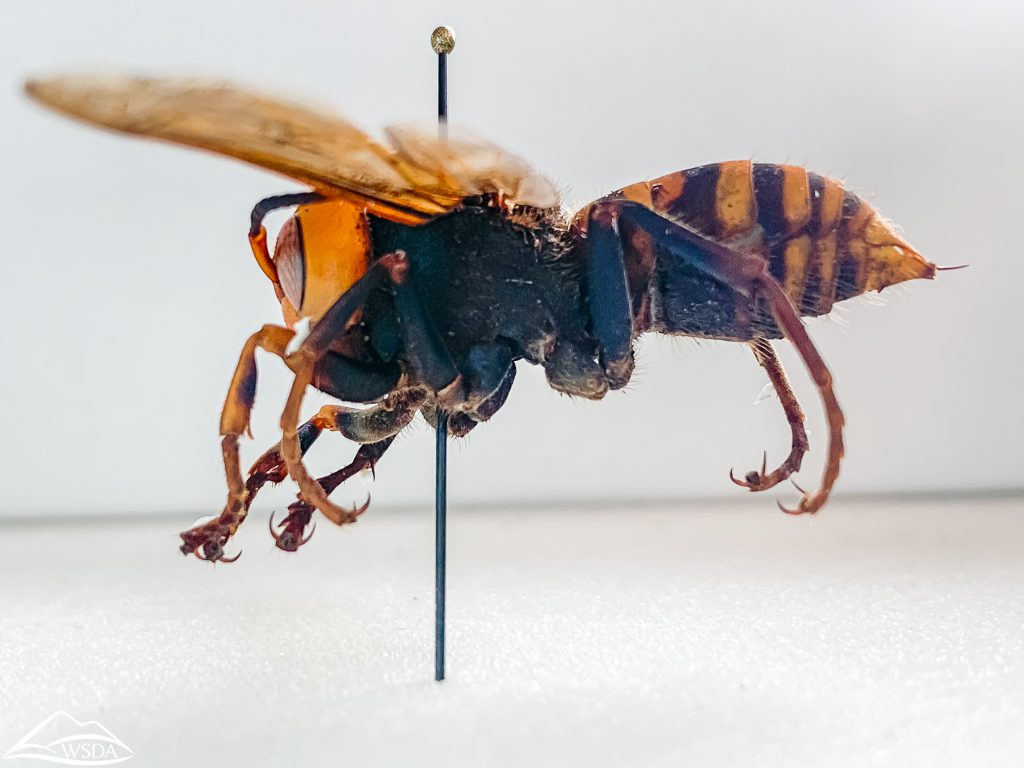Scientific Name: Vespa mandarinia
The Entomological Society of America has changed the accepted common name of Vespa mandarinia. “Northern giant hornet” has been formally adopted as the new common name. To learn more visit the Entomological Society of America Web site.
What Is It?
The northern giant hornet (Vespa mandarinia) is an invasive species from Asia and a known predator of honeybees. Though not typically aggressive to humans, it will attack anything that threatens its colonies, which usually is in the ground or in tree cavities. It can sting multiple times and has powerful venom that can inflict serious injury, or in some cases, death. In late summer through fall, the hornet may attack honeybee colonies en masse, resulting in the complete destruction of a healthy colony in a matter of hours. The attack leaves piles of decapitated victims in front of the hive.
Is It Here Yet?
Yes. The northern giant hornet was verified in Blaine (2019) and Bellingham (2020). Intensive trapping followed, and no northern giant hornets were found in 2021-2024. In late 2024, the Washington State Department of Agriculture and the U.S. Department of Agriculture jointly declared the northern giant hornet eradicated from the United States. However, new introductions are always possible, so the public still is asked to keep an eye out and report any sightings.
Why Should I Care?
The northern giant hornet poses a serious threat to Washington honeybees and the honeybee industry. While the extent of possible damage to Washington’s honeybee industry is not yet known, a similar hornet in Europe has reduced beehives by 30 percent and up to two-thirds of the honey yield.
How Can We Stop It?
Report any sighting to the Washington State Department of Agriculture or the Washington Invasive Species Council reporting app.
IMPORTANT NOTE: Use extreme caution near a northern giant hornet. Its stinger is longer than that of a honeybee, and the venom is more powerful than any local bee or wasp. If you find a colony do NOT attempt to remove or eradicate it. Report it immediately using one of the methods above.
What Are Its Characteristics?
- The northern giant hornet can grow to 2 inches in length.
- Its body is marked by yellow or orange and black stripes with large yellow or orange heads.
- Wingspan is about 3 inches.
How Do I Distinguish It From Native Species?
The northern giant hornet’s distinguishing feature is its size. There is not a native species of wasp or hornet in Washington State that grows to the size of a northern giant hornet. In addition to its large size, its yellow or orange head is another identifying feature.
Additional Photographs




